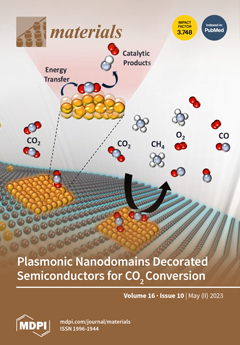Sodium sulfate (Na
2SO
4) and sodium carbonate (Na
2CO
3) are weakly alkaline activators. Alkali-activated slag (AAS) cement prepared with them shows the special advantages of long setting time and low shrinkage, but it shows slow development of
[...] Read more.
Sodium sulfate (Na
2SO
4) and sodium carbonate (Na
2CO
3) are weakly alkaline activators. Alkali-activated slag (AAS) cement prepared with them shows the special advantages of long setting time and low shrinkage, but it shows slow development of mechanical properties. In the paper, Na
2SO
4 and Na
2CO
3 were used as activators and compounded with reactive magnesium oxide (MgO) and calcium hydroxide (Ca(OH)
2) to optimize the setting time and mechanical properties. The hydration products and microscopic morphology were also studied using XRD, SEM, and EDS. Furthermore, the production cost and environmental benefits were compared and analyzed. The results show that Ca(OH)
2 is the main influencing factor for setting time. It reacts preferentially with Na
2CO
3 to form CaCO
3, which makes AAS paste lose plasticity rapidly and shortens the setting time, and then produces strength. Na
2SO
4 and Na
2CO
3 are the main influencing factors for flexural and compressive strength, respectively. Suitably high content is beneficial to promote the development of mechanical strength. The interaction of Na
2CO
3 and Ca(OH)
2 shows a great effect on the initial setting time. High content of reactive MgO can shorten the setting time and increase the mechanical strength at 28 days. There are more crystal phases in hydration products. Considering the setting time and mechanical properties, the composition of activators are: 7% Na
2SO
4, 4% Na
2CO
3, 3–5% Ca(OH)
2, and 2–4% reactive MgO. Compared with ordinary Portland cement (OPC) and AAS cement activated by sodium hydroxide (NaOH, NH) and water glass (WG) with the same alkali equivalent, the production cost and energy consumption are greatly reduced. Compared with P·O 42.5 of OPC, CO
2 emission is reduced by 78.1%. AAS cement activated by weakly alkaline activators shows excellent environmental and economic benefits and good mechanical properties.
Full article






